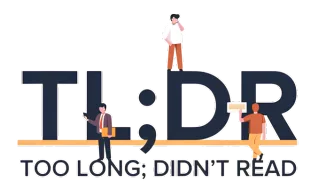A quiet shift just happened on Solana, one that could reshape how we think about stablecoins and digital gold. Tether, the giant of stablecoins, now has two new cross-chain versions of its assets running on the network. This isn’t just another token launch; it’s a move to tie Solana more tightly into the broader crypto economy.
- Tether has launched two new cross-chain versions of its assets, USDT0 and XAUT0, on the Solana network, aiming to integrate Solana more deeply into the wider crypto economy.
- These new assets, managed by Everdawn Labs using LayerZero technology, offer direct access to native USDT liquidity across multiple chains and introduce Tether Gold to Solana for the first time.
- The initiative promises enhanced interoperability with “no wrapped assets, no external bridges, faster settlement, and lower fees,” providing a more secure and efficient way to transfer stable value.
I’m talking about USDT0 and XAUT0. These aren’t the original Tether tokens you might know. Instead, they are specially bridged versions of Tether’s USDT stablecoin and Tether Gold (XAUT). Everdawn Labs manages and operates these new assets, using LayerZero’s technology to make them work across different blockchains.
Now, you might recall that Tether’s native USDT has been on Solana for years. So, what’s the big deal with USDT0? Well, the existing USDT on Solana, while useful, mostly stays within Solana’s own borders. It’s like having a local currency that doesn’t easily convert when you travel.
Lorenzo R., a co-founder of USDT0, put it plainly. He told The Block that Solana’s native USDT can only circulate within its own ecosystem. But USDT0 changes that. It links Solana directly to a massive pool of native USDT liquidity, over $175 billion, spread across chains like Ethereum, Tron, and TON.
This connection comes with some important promises. Lorenzo highlighted “no wrapped assets, no external bridges, faster settlement, and lower fees.” This means less risk of assets losing their peg or getting stuck in a complicated cross-chain transfer. It’s a direct line, not a detour.
Then there’s XAUT0, bringing Tether Gold to Solana for the very first time. Gold, in digital form, now has a new home on a fast, low-cost blockchain. This opens up fresh possibilities for how people use gold as a digital asset.
Lorenzo sees a big picture here. He believes combining “omnichain dollars and gold-backed value” gives builders a strong foundation. They can create a new generation of applications. Think global remittances, corporate treasuries, or even programmable lending, all backed by real assets.
The Legacy Mesh at Work
Everdawn Labs makes all this possible through its “Legacy Mesh” platform. This platform acts as a cross-chain liquidity structure, powered by LayerZero’s interoperability protocol. It’s the engine that moves these Tether-linked assets between chains.
It’s important to understand Legacy Mesh isn’t a general bridge for just any crypto asset. Lorenzo clarified it’s a stablecoin-specific interoperability layer. This focus helps keep things streamlined and, hopefully, more secure for these particular tokens.
Every transaction on Legacy Mesh, he added, is “fully backed by real assets.” They maintain auditable liquidity pools, and you won’t find any wrapped or synthetic tokens in the mix. This direct backing is a key selling point, aiming to build trust in these cross-chain versions.
Of course, moving value isn’t always free. Transfers on Legacy Mesh carry a 0.03% fee, paid in USDT. It’s a small slice, but it’s there. One might wonder if the convenience and security outweigh that tiny cost. For many, I suspect it will.
Looking at the numbers, USDT0 and XAUT0 are still quite young compared to their native counterparts. CoinGecko shows USDT0 with about 7.5 billion tokens circulating. That’s a solid start, but Tether’s native USDT exceeds 180 billion. XAUT0 has around 7,355 tokens, while native XAUT totals 375,572.
These figures show a significant difference in scale. It suggests these bridged versions have a lot of room to grow. They are like new roads being built, with traffic still finding its way onto them.
A Spreading Network
The Solana launch is just the latest step in a broader expansion for USDT0 and XAUT0. USDT0 is already active on a long list of networks. This includes Plasma, Polygon, Arbitrum, Berachain, Ethereum, Ink, Flare, Optimism, Hyperliquid’s HyperEVM, SEI, and Rootstock.
XAUT0 also has a growing presence. You can find it on TON, HyperEVM, Arbitrum, Ink, CELO, Avalanche, and Polygon. It’s a busy map of connections, showing a clear push to make these assets available wherever developers and users might need them.
Lorenzo confirmed that more network launches are on the horizon. They have a clear strategy for choosing where to go next. He mentioned three core pillars guiding their decisions.
First, they look at “user engagement and ecosystem demand.” It makes sense to go where people are already building and where there’s a clear need. Second, they consider “chains that offer something distinct and unique to the ecosystem.” This could mean a chain with a specific focus or a novel technical approach.
Finally, they weigh “the potential for growth and long-term value for the Tether ecosystem.” It’s a strategic play, aiming to expand Tether’s reach and utility across the crypto landscape. It’s a practical approach to building out a network, isn’t it?
This push for cross-chain connectivity feels like a natural evolution for crypto. Assets shouldn’t be trapped on single blockchains forever. The ability to move stable value, like dollars or gold, seamlessly between different environments opens up many possibilities for innovation. It’s a step towards a more unified, less fragmented digital financial system.

